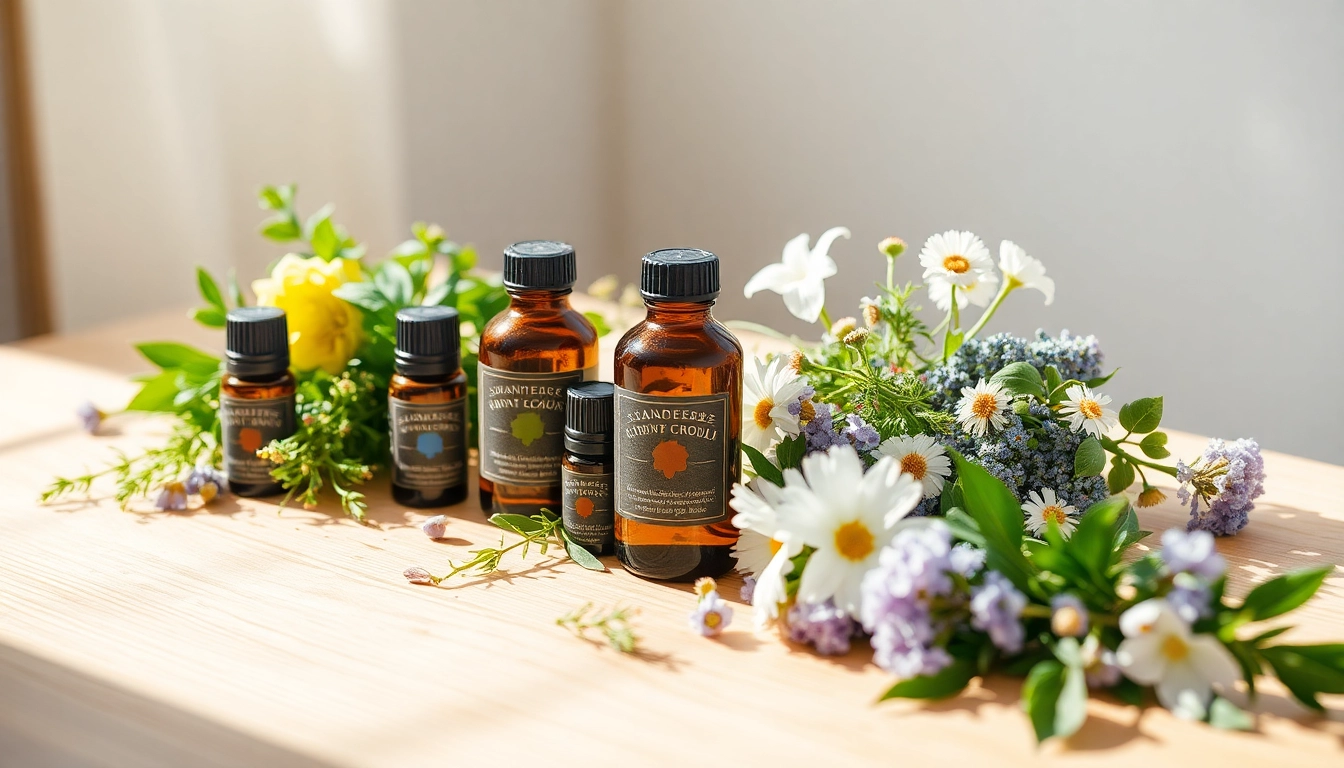Understanding Essential Oils
What Are Essential Oils?
Essential oils are concentrated liquids extracted from the leaves, stems, flowers, roots, or other parts of plants. They capture the plant’s scent and therapeutic properties, providing a strong aroma and various health benefits. Unlike dried herbs, essential oils are much more potent and should be used with care. These oils can be used in numerous ways, such as in aromatherapy, massage, skincare, and homemade cleaning products. In our fast-paced lives, integrating essential oils offers a significant opportunity to enhance our overall well-being.
Common Types of Essential Oils
Numerous essential oils are available, each with unique properties. Some of the most popular include:
- Lavender: Known for its calming and relaxing properties, lavender is often used to alleviate stress and anxiety and promote better sleep.
- Peppermint: This oil is invigorating and refreshing, commonly used to combat headaches and improve concentration.
- Eucalyptus: Renowned for its ability to clear sinuses, eucalyptus oil is favored during cold and flu season.
- Lemon: Lemon essential oil is a natural antibacterial and antiviral agent, with a bright, uplifting scent that can enhance mood.
- Tea Tree: Known for its antiseptic properties, tea tree oil is commonly used in skincare for its acne-fighting capabilities.
Health Benefits of Essential Oils
The therapeutic benefits of essential oils vary widely and can be attributed to various compounds present in each oil. Some of the key benefits include:
- Stress Relief: Many essential oils, such as lavender and bergamot, are linked to reduced anxiety and improved mood.
- Improved Sleep Quality: Certain oils can promote relaxation and support a good night’s sleep. Lavender and chamomile are particularly effective.
- Pain Relief: Oils like peppermint and eucalyptus are often used in massage oils to relieve headaches and muscle tension.
- Boosted Immune System: Essential oils such as tea tree and lemon have antiviral and antibacterial properties that can help support immune function.
- Enhanced Focus and Concentration: Oils like rosemary and peppermint can stimulate mental clarity and focus, making them beneficial in work environments.
How to Use Essential Oils Safely
Methods of Application
Using essential oils safely is crucial to derive their benefits without adverse effects. Some common methods of application include:
- Aromatherapy Diffusion: Adding essential oils to a diffuser disperses the oil’s aroma into the air, enhancing mood and promoting a calming environment.
- Topical Application: Essential oils can be diluted in carrier oils (like coconut or jojoba oil) and applied to the skin for localized benefits.
- Bathing: Adding a few drops of essential oils to bathwater can create a relaxing and soothing experience.
- Inhalation: Inhaling directly from the bottle or applying a few drops to a tissue can provide immediate effects.
- Cleaning Products: Essential oils can be incorporated into homemade cleaning solutions for a natural approach to disinfecting and deodorizing.
Choosing Quality Essential Oils
Not all essential oils are created equal. When choosing oils, consider the following:
- Purity: Look for oils labeled as 100% pure essential oil, free from synthetic additives or diluents.
- Source: Research the company to ensure they ethically source their oils and provide transparency about production methods.
- Testing: Reputable companies will often provide third-party testing results to verify the purity and potency of their oils.
- Packaging: Essential oils should be stored in dark glass bottles to protect them from light degradation.
- Expiration date: Quality essential oils usually come with an expiration date to indicate their shelf life.
Potential Risks and Precautions
While essential oils can offer remarkable benefits, they also come with potential risks if not used appropriately. Key precautions include:
- Always dilute essential oils with carrier oils before applying them to the skin to avoid irritation.
- Perform a patch test on a small area of skin before widespread use to gauge any adverse reactions.
- Avoid ingestion of essential oils unless under the guidance of a trained practitioner.
- Consult with a healthcare professional if you are pregnant, nursing, or have existing health conditions.
- Be cautious with using certain oils around pets, as some can be toxic to animals, particularly cats.
Creating Your Own Essential Oil Blends
Steps for Blending Essential Oils
Creating custom essential oil blends allows you to tailor scents and benefits to your preferences. Here’s how to create your own blends:
- Choose Base Notes: These oils typically have a heavy scent and last longer, such as sandalwood or cedarwood.
- Select Middle Notes: Middle notes, like lavender or chamomile, add body to the blend.
- Incorporate Top Notes: Top notes are light and fragrant, such as citrus oils, providing an initial impression.
- Blend Ratio: A common ratio is 3:5:2 for base, middle, and top notes. Adjust according to personal preference.
- Test and Adjust: Experiment with different combinations and ratios until you find a blend that resonates with you.
Popular Essential Oil Recipes
Here are some popular essential oil recipes you can try at home:
- Relaxing Lavender Mist: Combine 10 drops of lavender oil with 2 oz of distilled water in a spray bottle.
- Uplifting Citrus Blend: Mix 5 drops of lemon oil, 5 drops of orange oil, and 5 drops of grapefruit oil.
- Soothing Muscle Rub: Combine 15 drops of peppermint oil with 2 tbsp of coconut oil for pain relief.
- Calming Sleep Blend: Blend 3 drops of chamomile oil, 3 drops of lavender oil, and 2 drops of sandalwood oil in a diffuser.
Tools and Equipment You’ll Need
To create your blends effectively, you’ll need a few essential tools:
- Dark Glass Bottles: Perfect for storing essential oils and blends to protect them from light.
- Dropper or Pipette: For accurate measurement of oils when blending.
- Aromatherapy Diffuser: Great for dispersing your blends into the air safely.
- Measuring Cups and Spoons: Useful for precise measurements of carrier oils and other ingredients.
- Labels: To keep track of your blends and their ingredients for future reference.
Essential Oils in Everyday Life
Essential Oils for Aromatherapy
Aromatherapy, the practice of using essential oils to enhance psychological and physical well-being, has gained significant popularity. It can be implemented in various settings:
- Home: Diffusing oils in living areas can create an inviting atmosphere and promote relaxation or rejuvenation based on the chosen scents.
- Workplace: Using essential oils in personal diffusers can help increase focus and productivity, creating a pleasant working environment.
- Yoga and Meditation: Incorporating calming scents like sandalwood or frankincense can enhance the experience and promote deeper relaxation.
Using Essential Oils for Cleaning
Many people are turning to natural solutions for cleaning their homes, and essential oils are a fantastic addition:
- All-Purpose Cleaner: Combine 1 cup of water, 1 cup of vinegar, and 10-15 drops of tea tree or lemon essential oil.
- Disinfecting Spray: Mix 1 cup of water, ½ cup of distilled white vinegar, and 10-20 drops of eucalyptus oil in a spray bottle.
- Wood Polish: Blend 1 cup of olive oil with 10 drops of lemon oil to nourish and shine wood surfaces.
Essential Oils in Skincare
Essential oils can greatly enhance skincare routines, offering multiple benefits such as hydration, soothing irritation, and combatting acne. Some recommended oils for skincare include:
- Tea Tree Oil: Effective for acne treatment, it helps clear breakouts and reduce inflammation.
- Jojoba Oil: Great for hydration; it closely resembles the skin’s natural oils.
- Frankincense Oil: Known for its anti-aging properties, it can improve skin elasticity and tone.
- Rosehip Seed Oil: High in vitamins A and C, it helps to brighten skin and reduce scars.
Evaluating the Effectiveness of Essential Oils
Setting Expectations
It’s important to set realistic expectations when using essential oils. While many studies suggest various health benefits, the effectiveness of essential oils can vary from person to person. Understanding that results may differ based on individual factors—such as the condition being treated, method of application, and personal sensitivity—is key.
Tracking Your Results
Maintaining a journal or log of your essential oil usage can be very beneficial. Note down the oils used, application methods, dosages, and any observed effects over time. This will help you identify which oils work best for you and track progress.
Expert Tips for Maximizing Benefits
To truly harness the potential of essential oils, consider these expert tips:
- Integrate essential oils into a holistic wellness approach, alongside proper nutrition and lifestyle habits.
- Stay informed about the latest research to discover new insights and applications for essential oils.
- Try incorporating mindfulness practices, such as meditation or journaling, alongside essential oils to enhance emotional benefits.
- Consult with certified aromatherapists or wellness professionals to gain tailored advice based on individual health needs.



